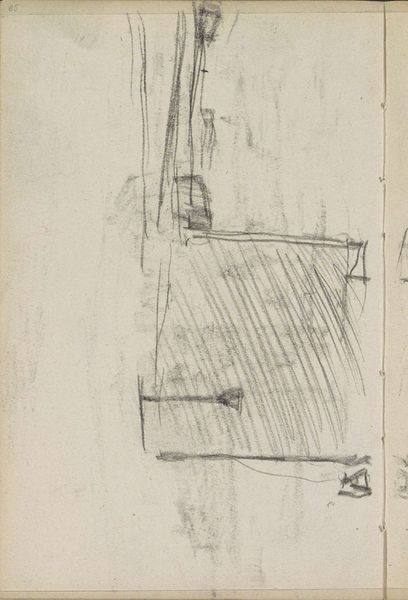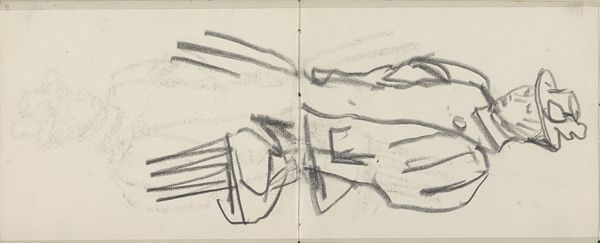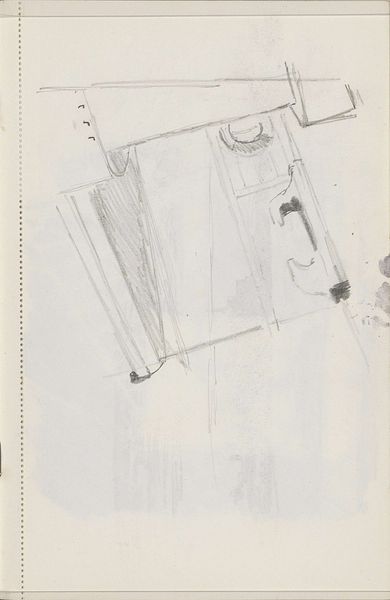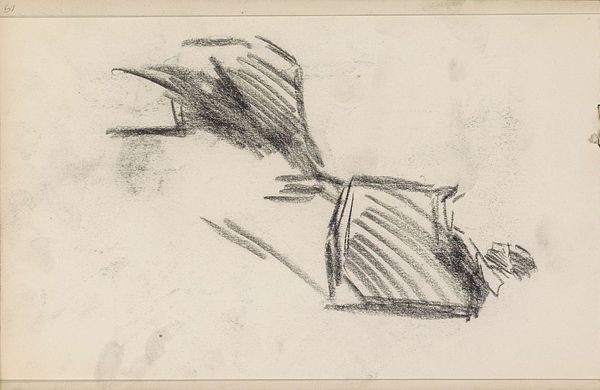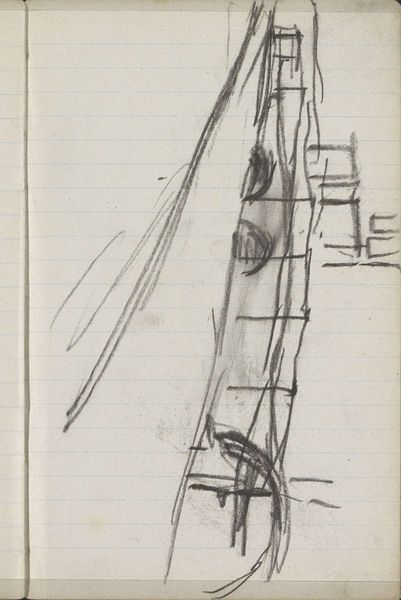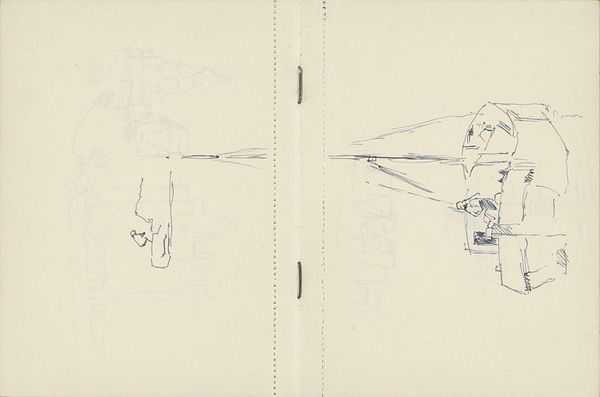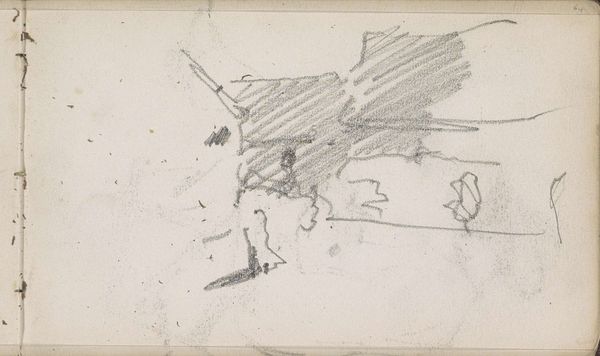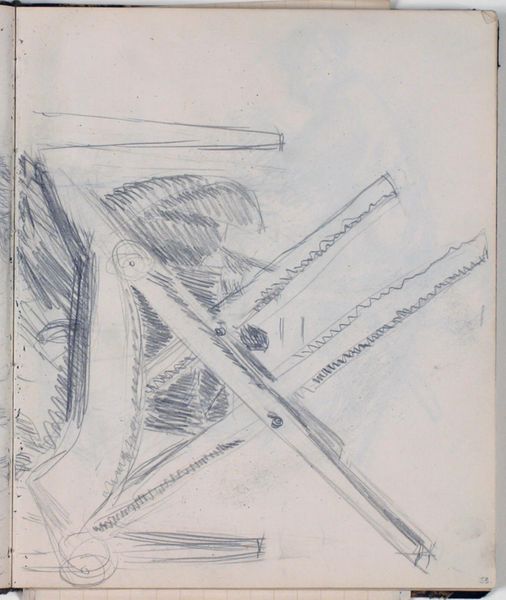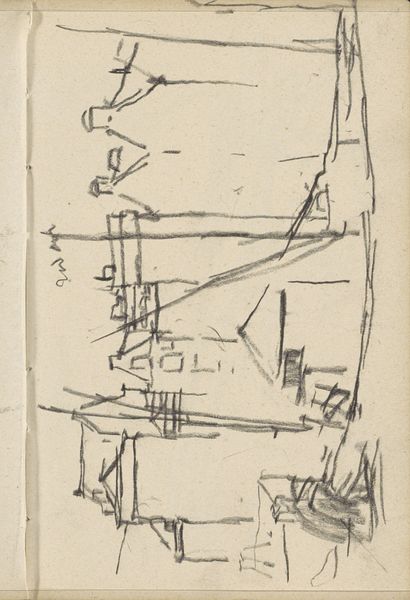
Copyright: Rijks Museum: Open Domain
Curator: Breitner's "Tower of the New Church in Amsterdam," dating from around 1893 to 1903, offers an intimate glimpse into the artist's creative process. It’s a drawing rendered in pencil, part of his sketchbooks now residing in the Rijksmuseum. Editor: There’s a real sense of immediacy here, like catching a fleeting thought. It almost feels incomplete, but in that incompleteness, it vibrates with potential. It's a blueprint of an idea about a spire that rises only in the artists imagination. Curator: The sketch provides insights into Breitner's approach to urban landscapes, which diverged quite significantly from his contemporaries. This sketch reveals his keen interest in capturing the modern city, not just as a panorama, but as fragmented, lived experiences. He zeroes in on a tiny detail. Editor: Absolutely. It feels incredibly personal, more of an exploratory jotting than a formal study. It gives off this rough-around-the-edges impression, that makes you focus less on perfection and more on the raw energy. A beautiful urban symphony for eyes only. Curator: Well, in his time, Amsterdam was changing rapidly, and artists played a significant role in shaping the perception of this transformation. The sketch might have served as a preliminary study, of sorts, but as we can appreciate in a museum today. Editor: True. Imagine strolling through Breitner's Amsterdam with the spire's idea sketch as your guide. Seeing how something so grandiose is broken down to such intimate expression! Curator: I think it also shows how drawing acted as a form of thinking for Breitner, a way of working through the complexities of his perception. Editor: Agreed, a private conversation he’s now allowing us to eavesdrop on a century later! I think I leave today having a fresh outlook on architecture as a feeling and not as fact. Curator: Yes, Breitner’s drawing becomes a document of its time and of a particular mode of seeing, so thanks for joining me in these important cultural re-readings of an artist vision!
Comments
No comments
Be the first to comment and join the conversation on the ultimate creative platform.
